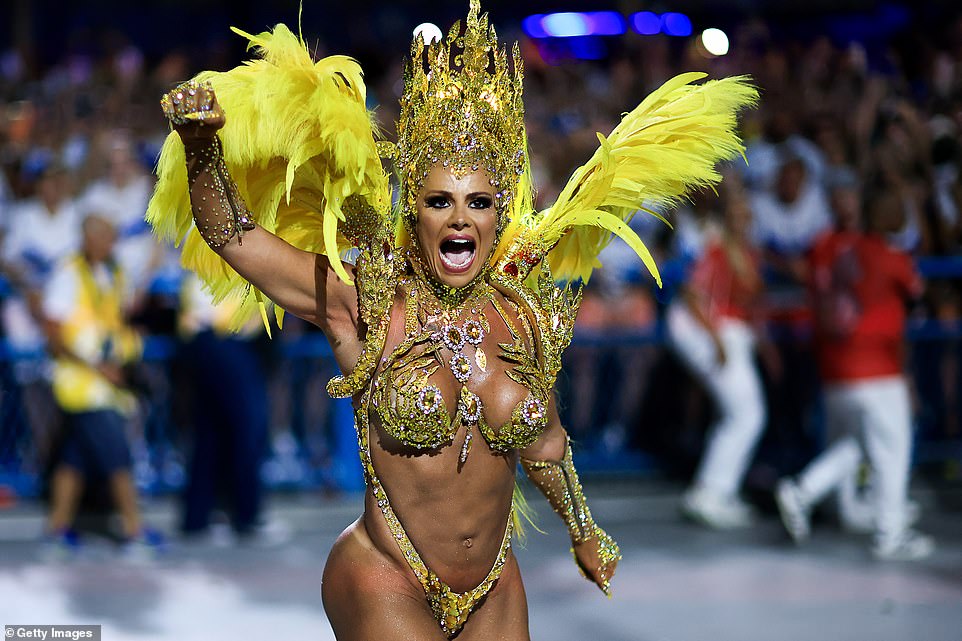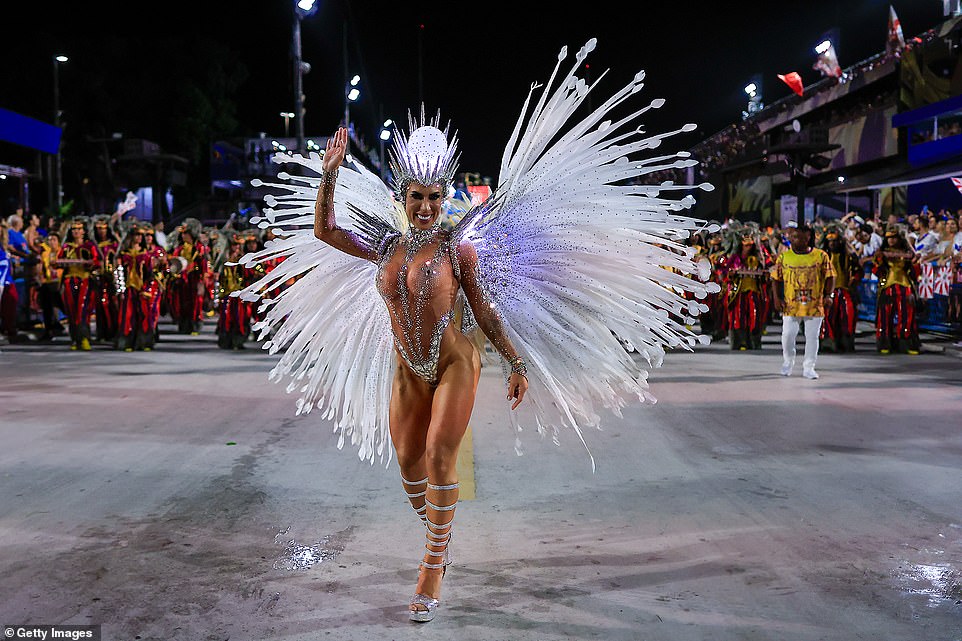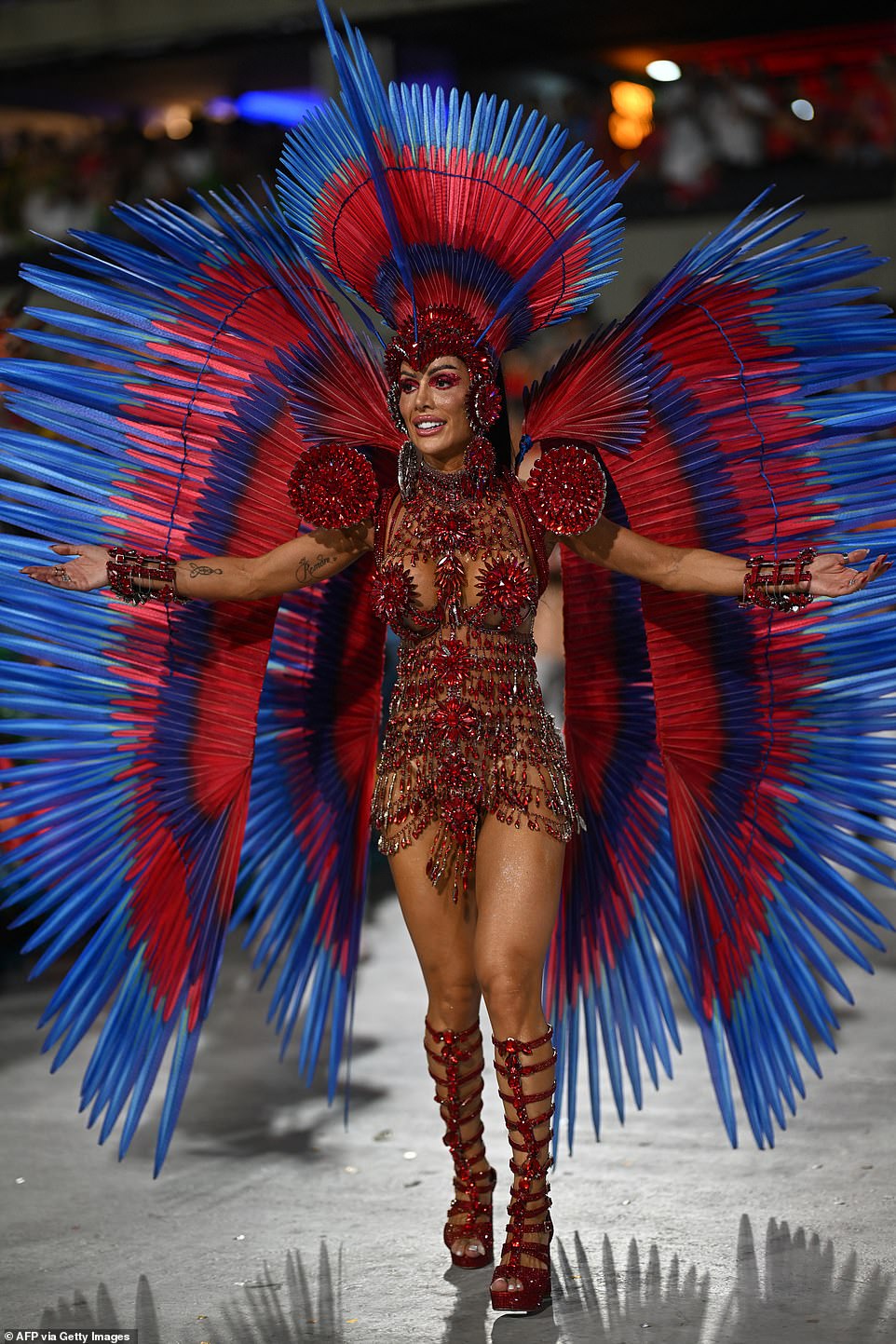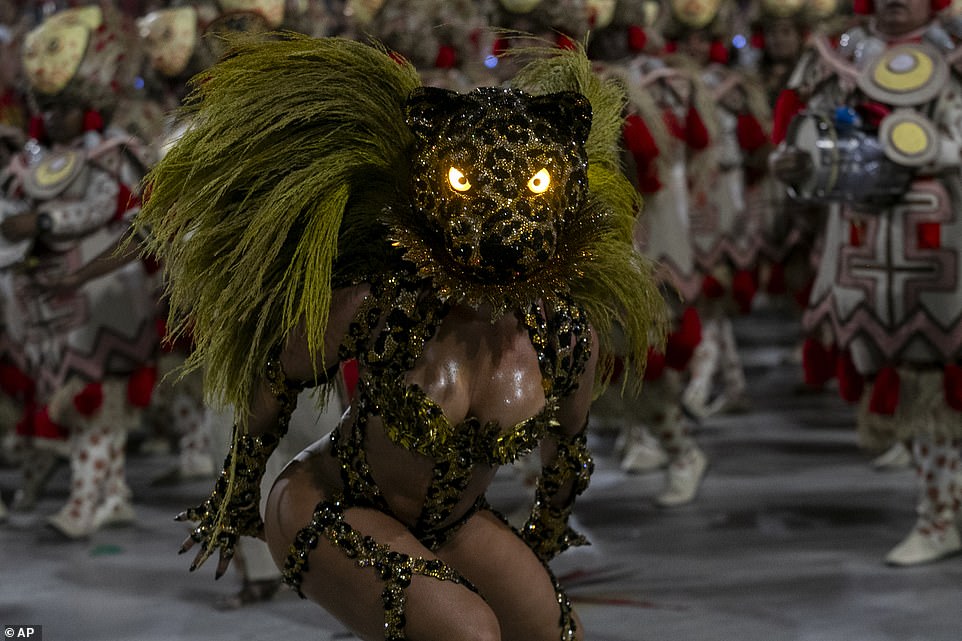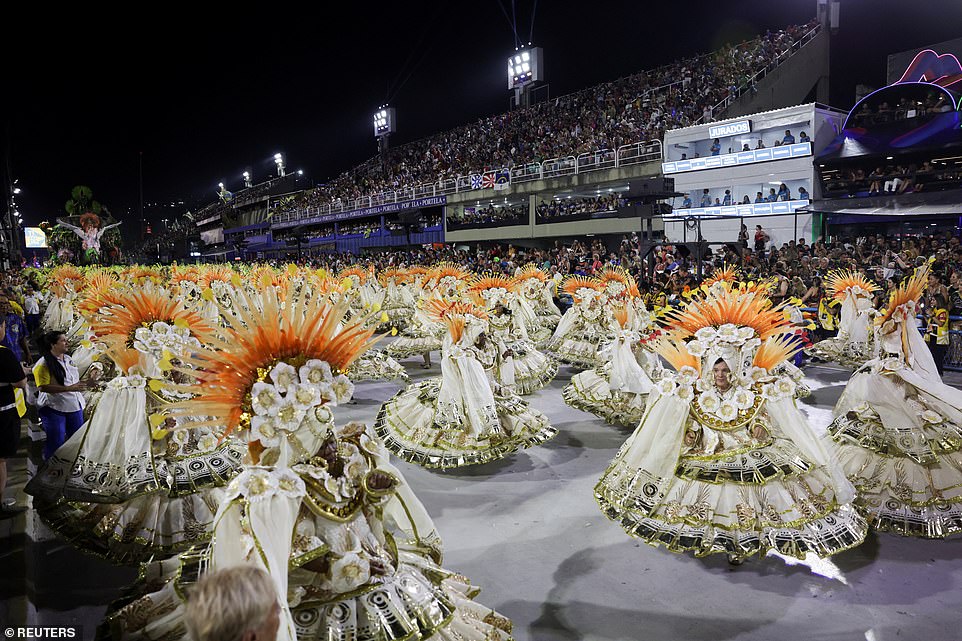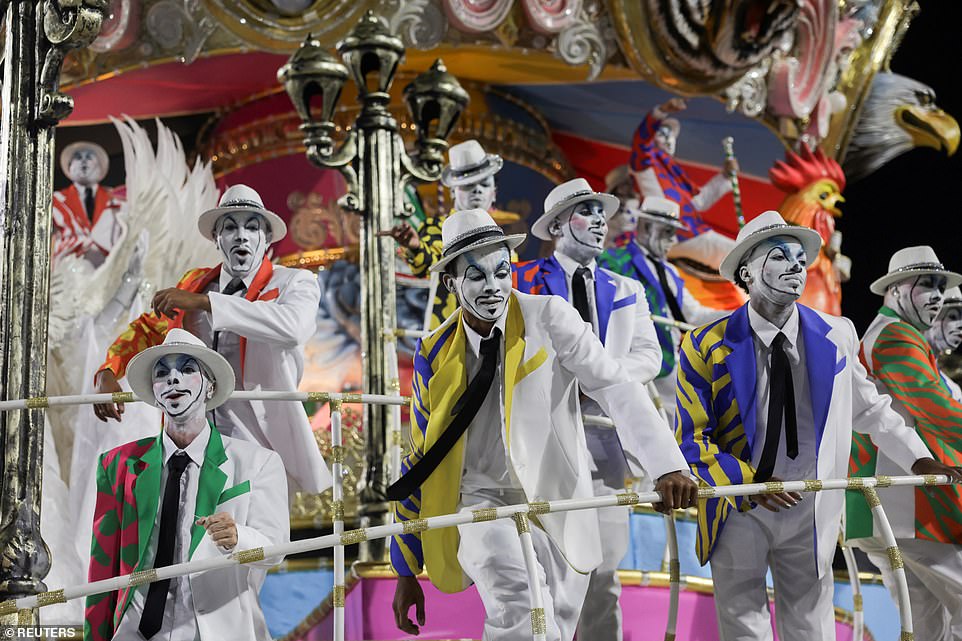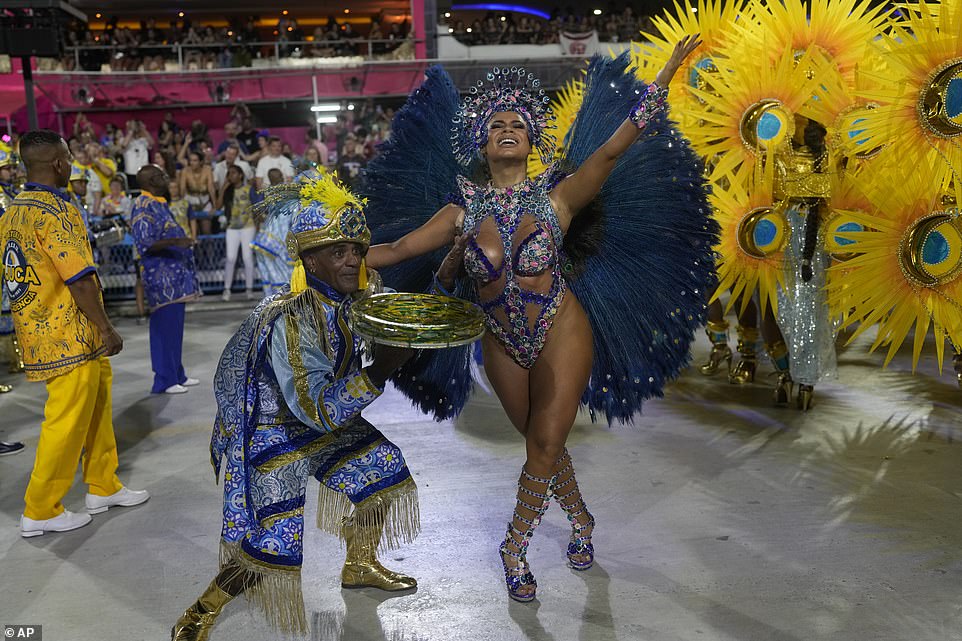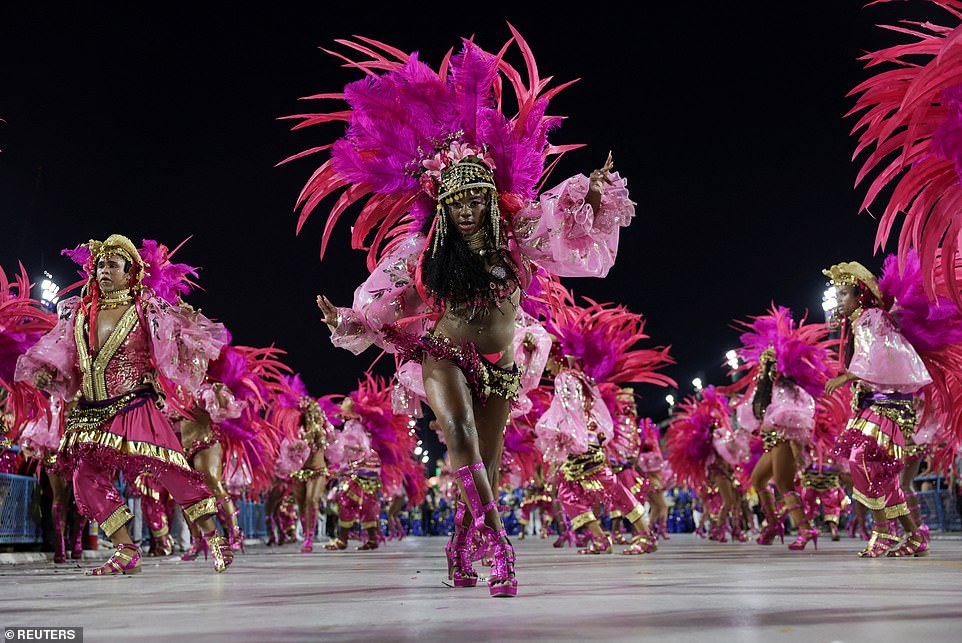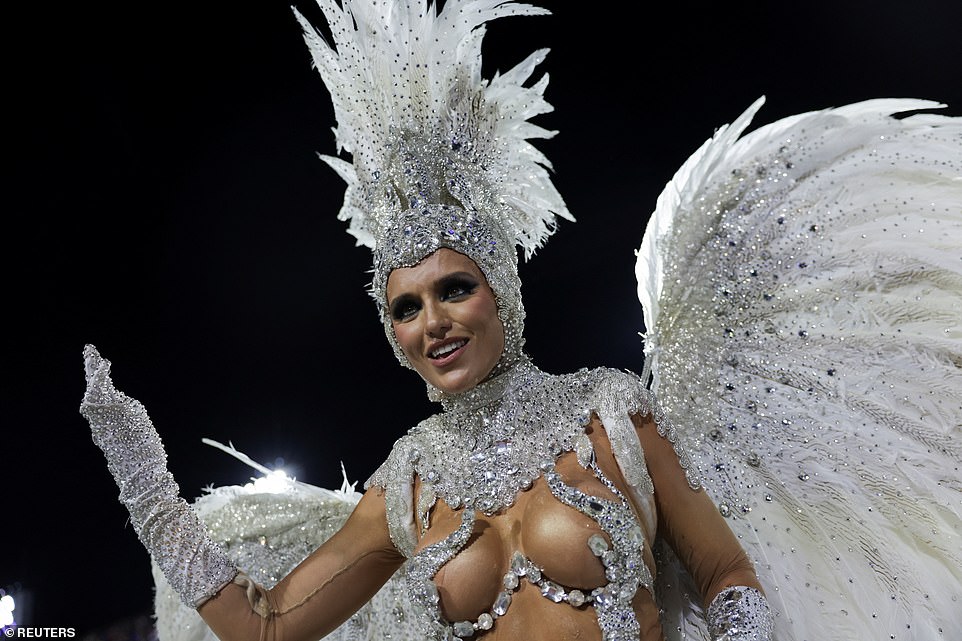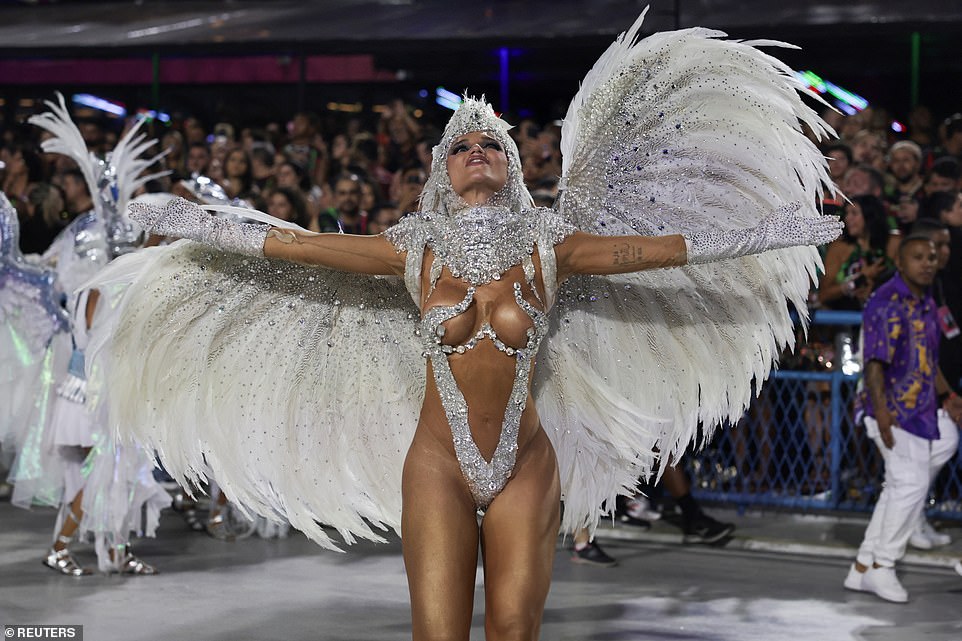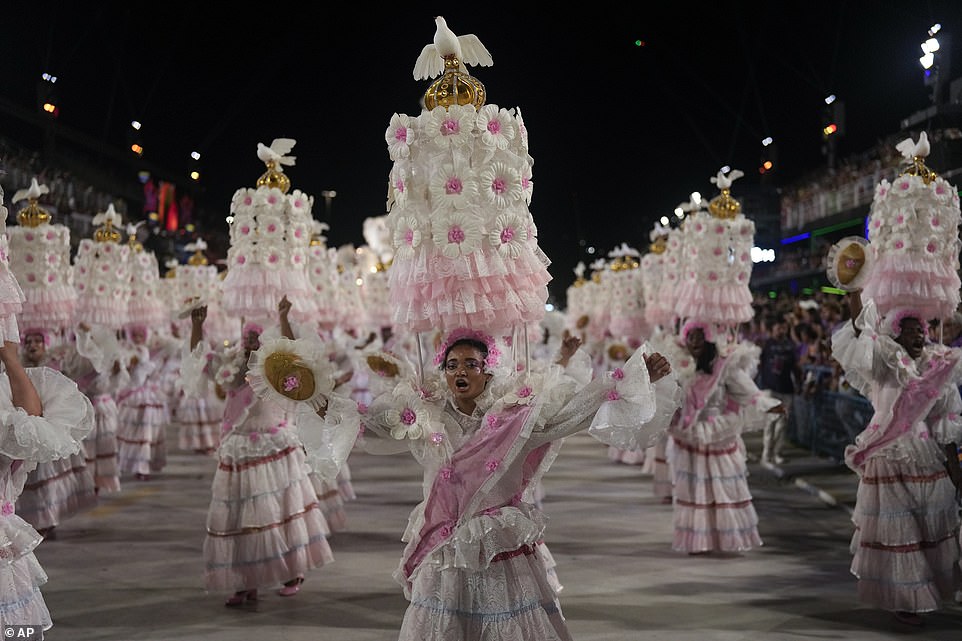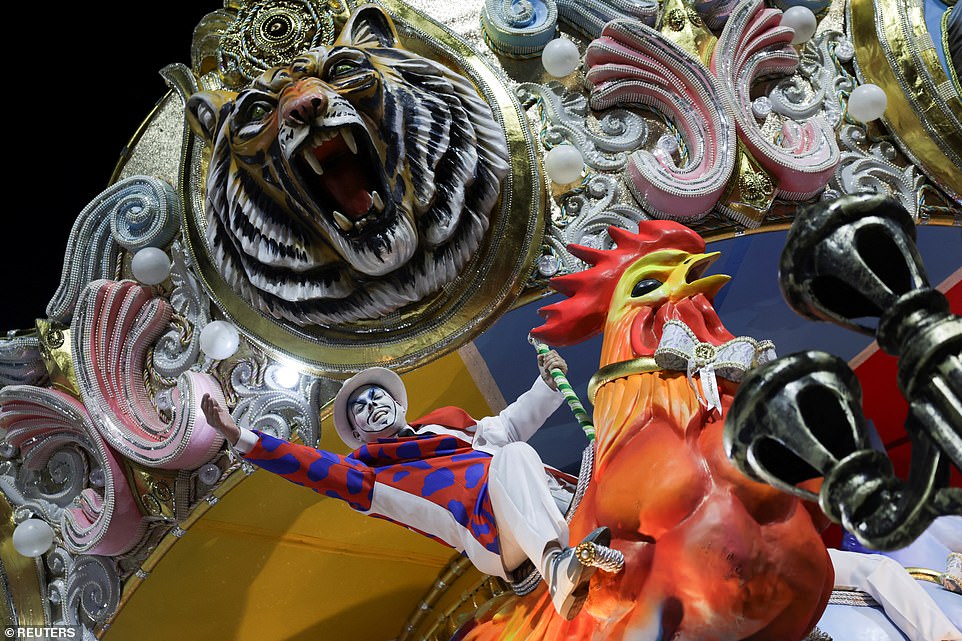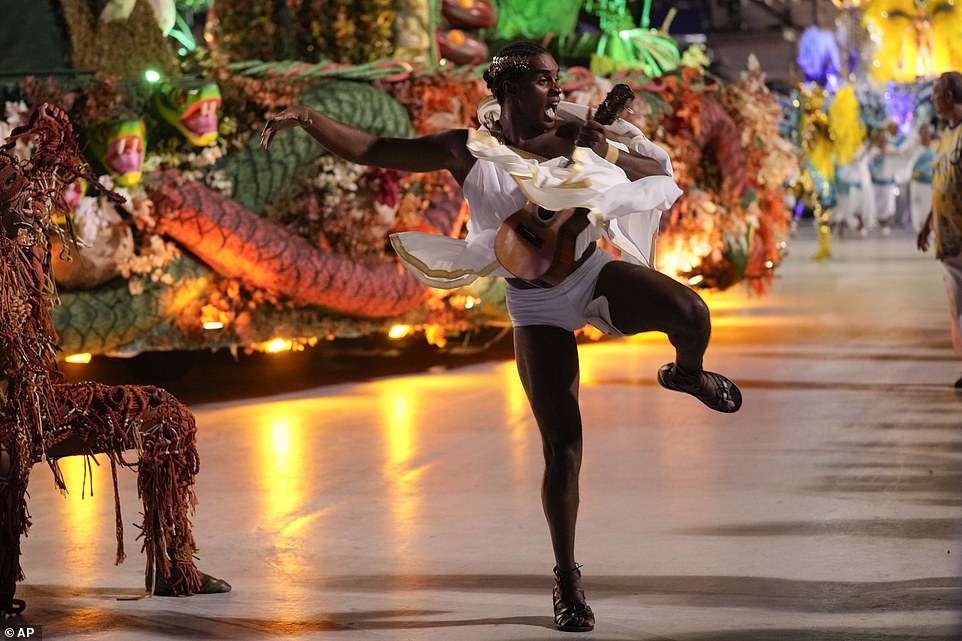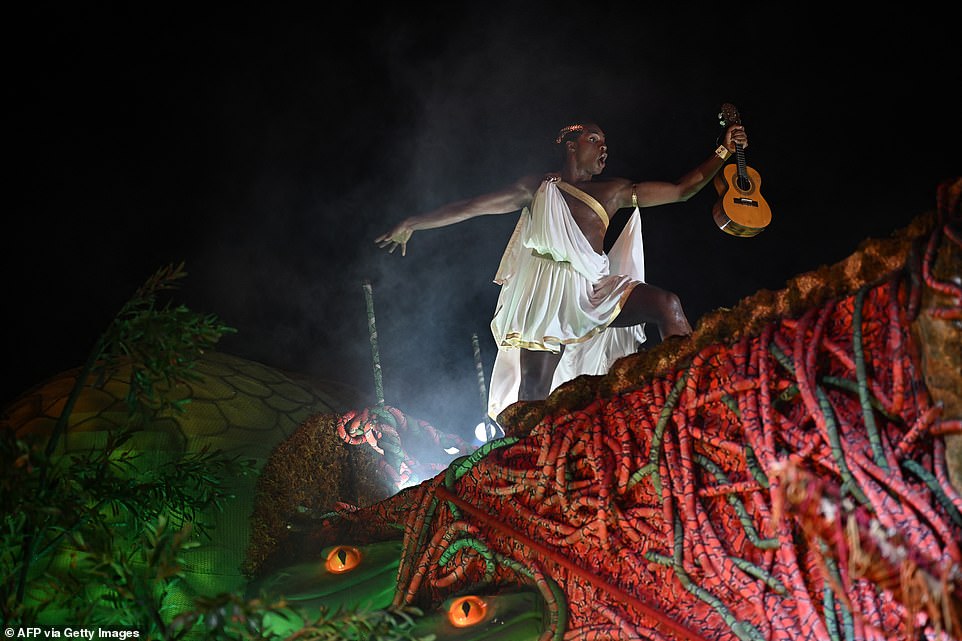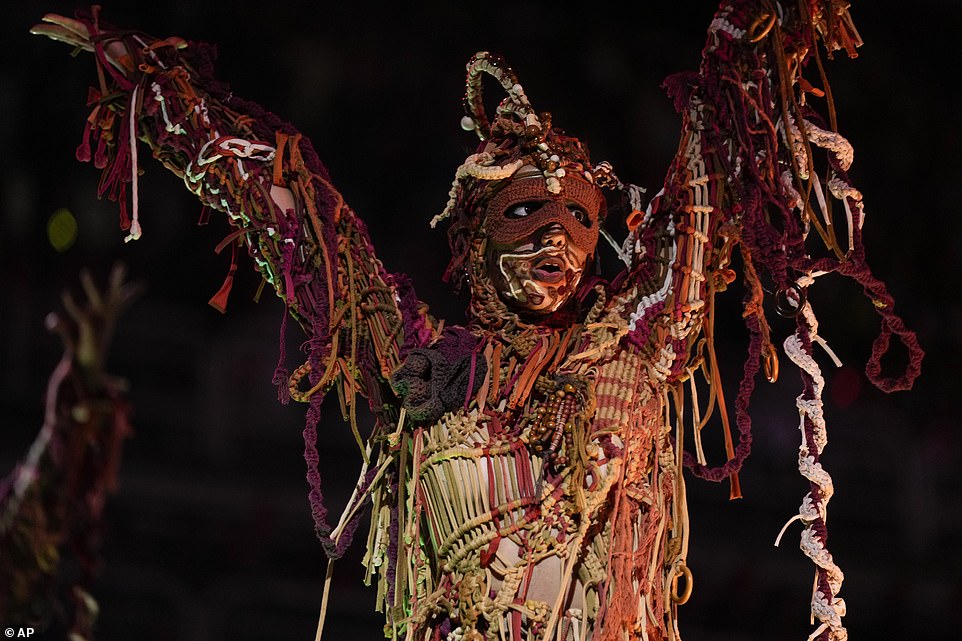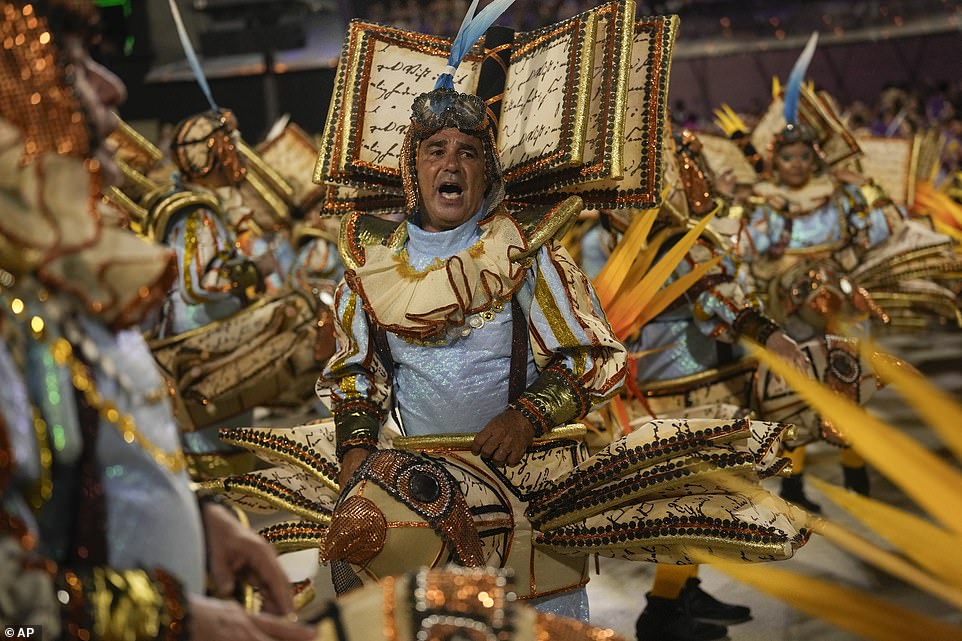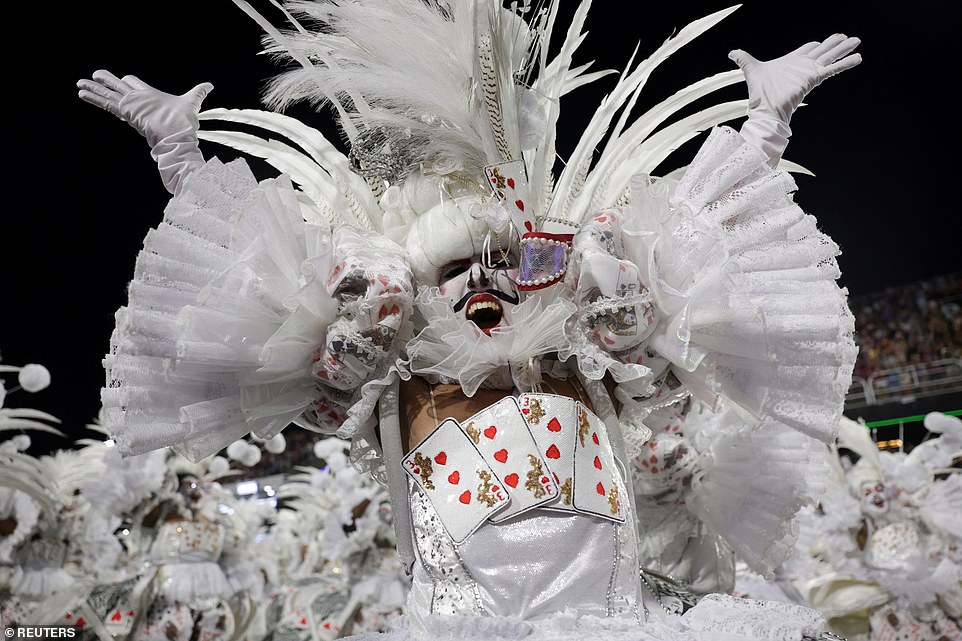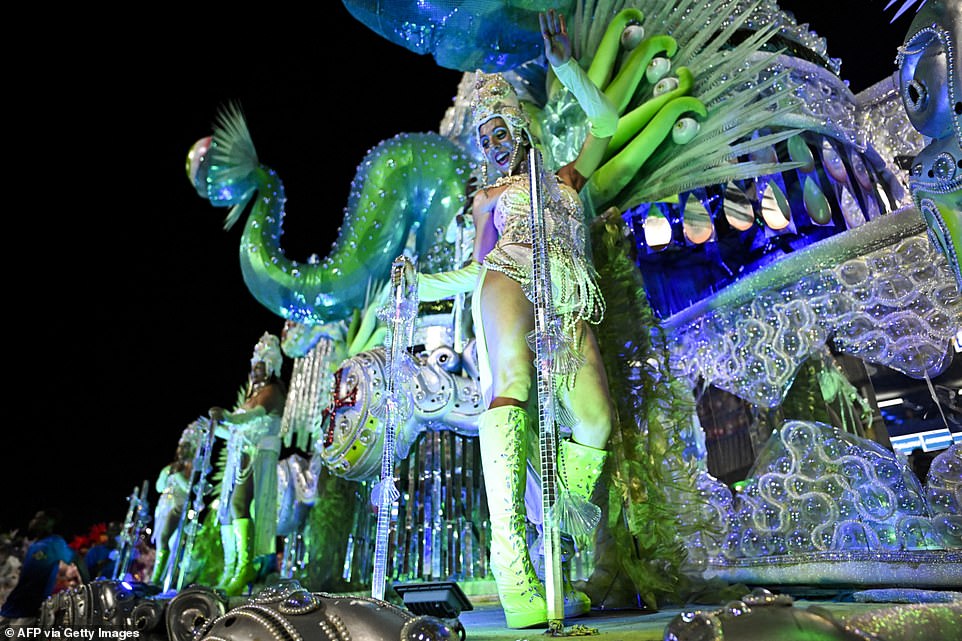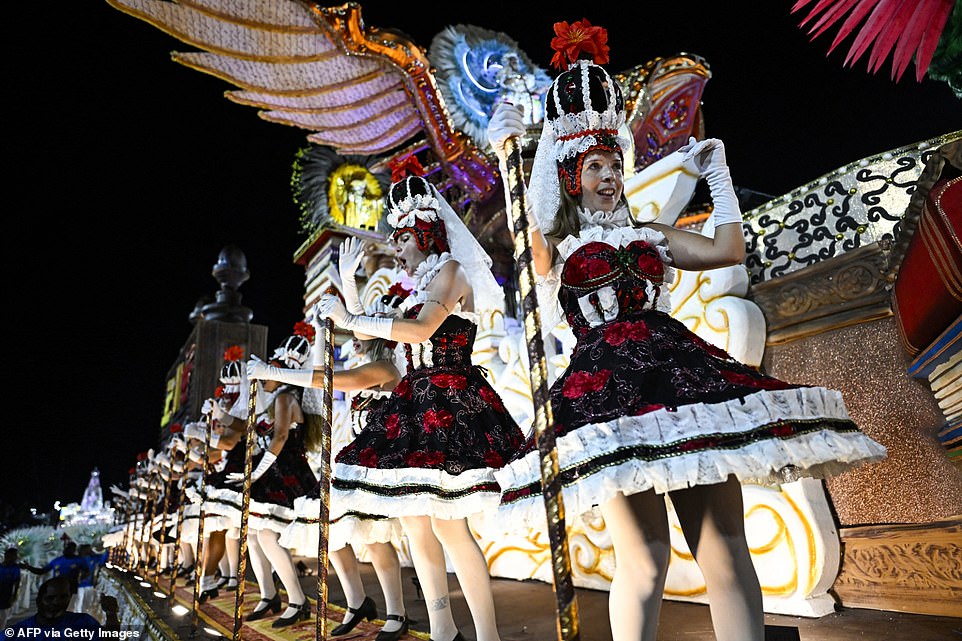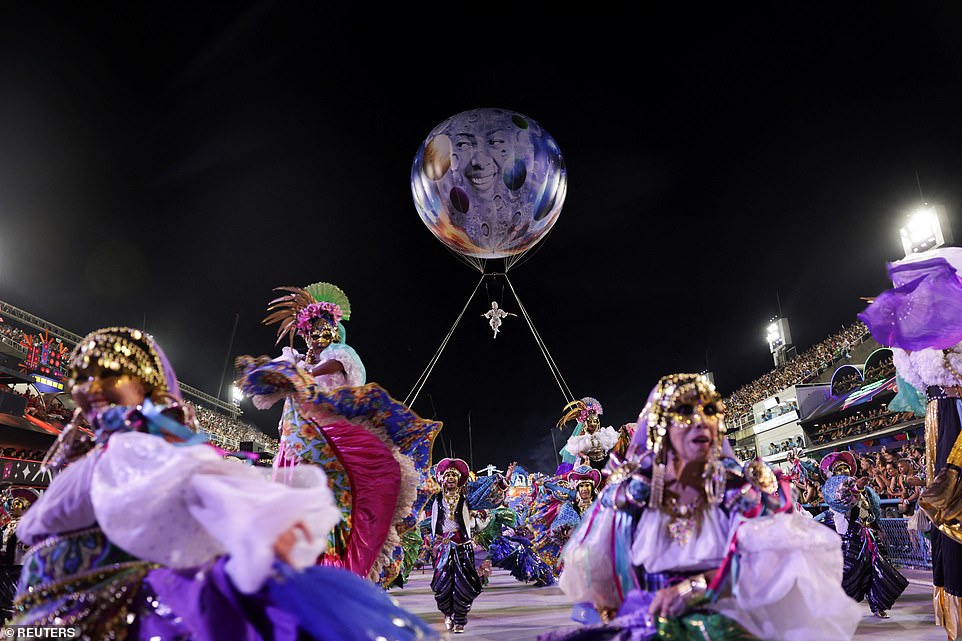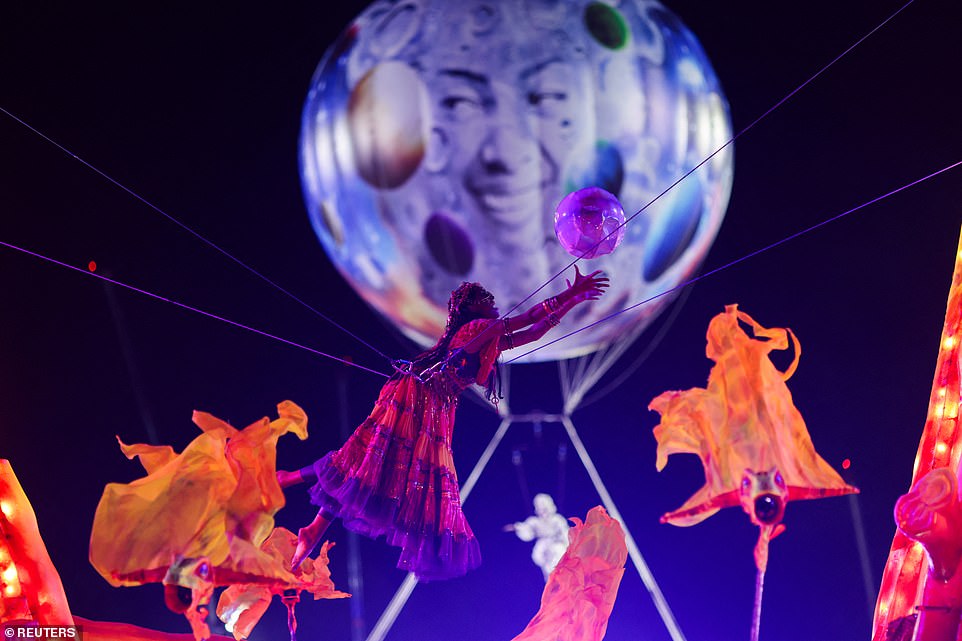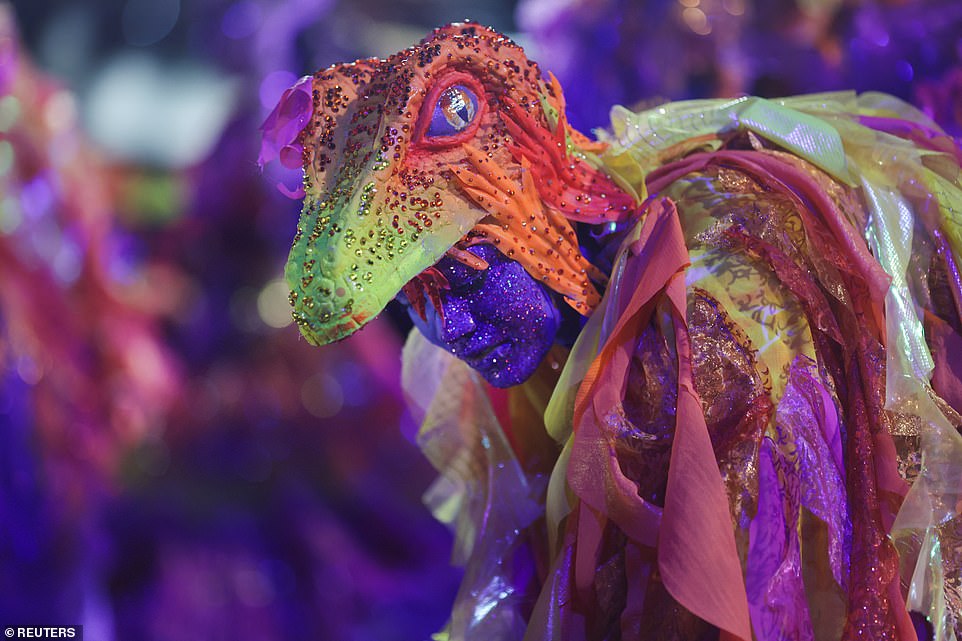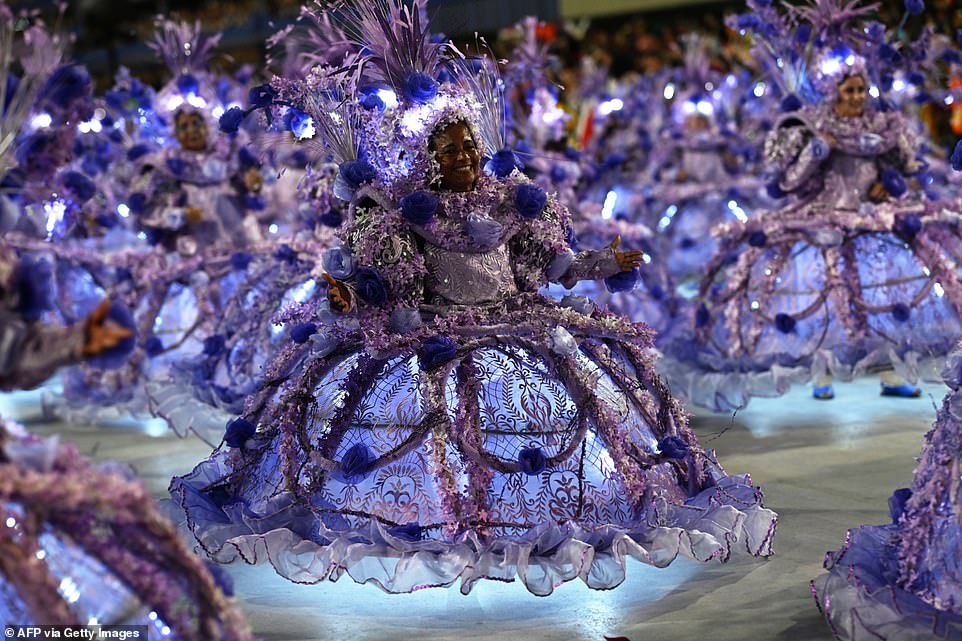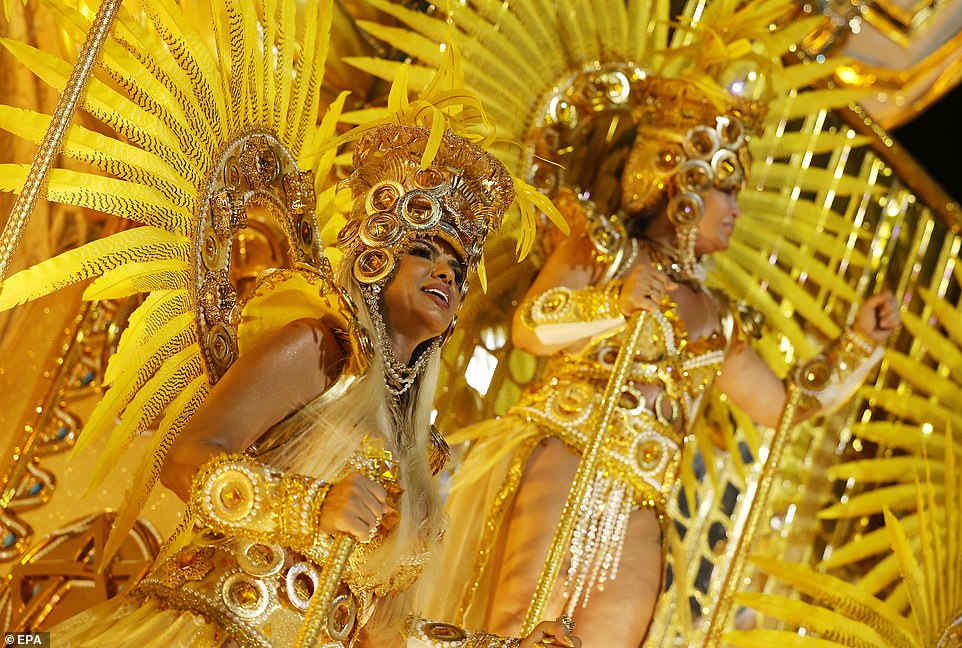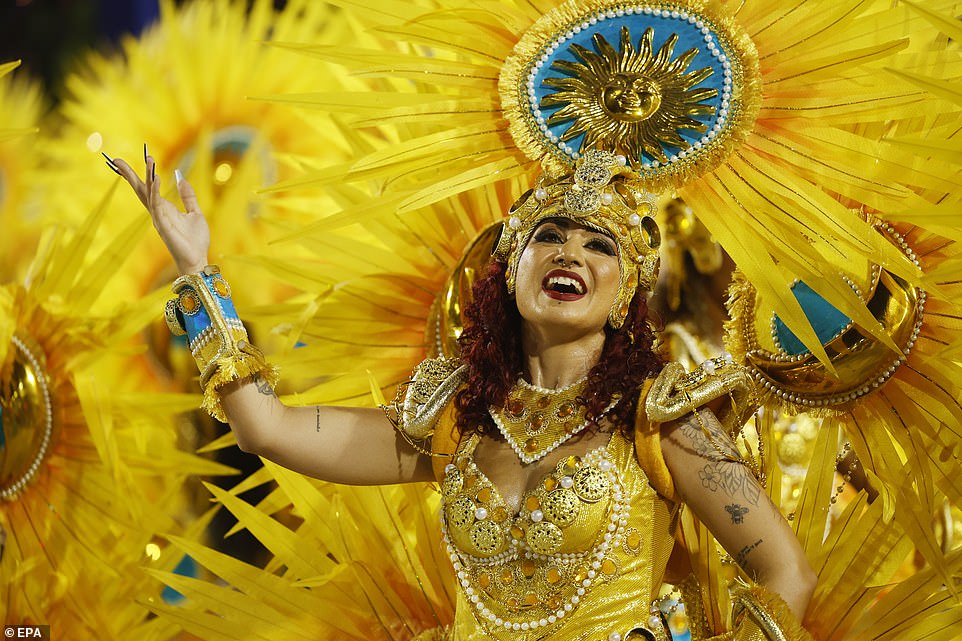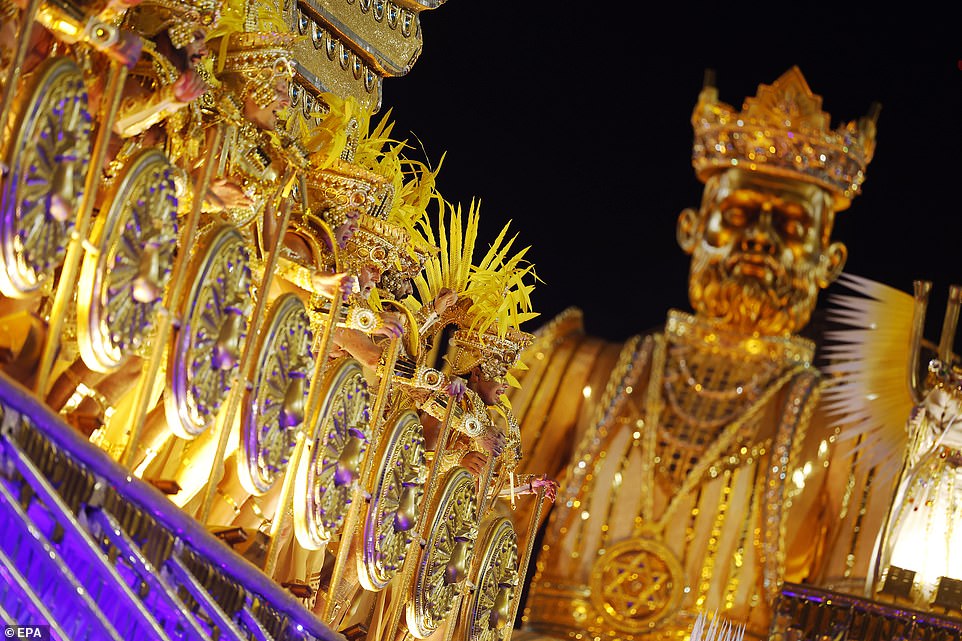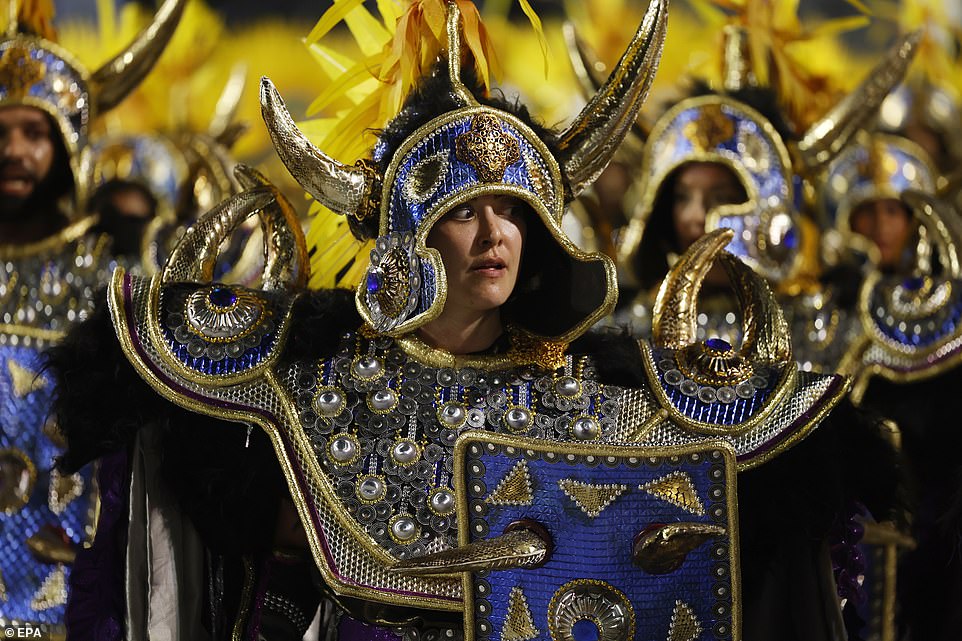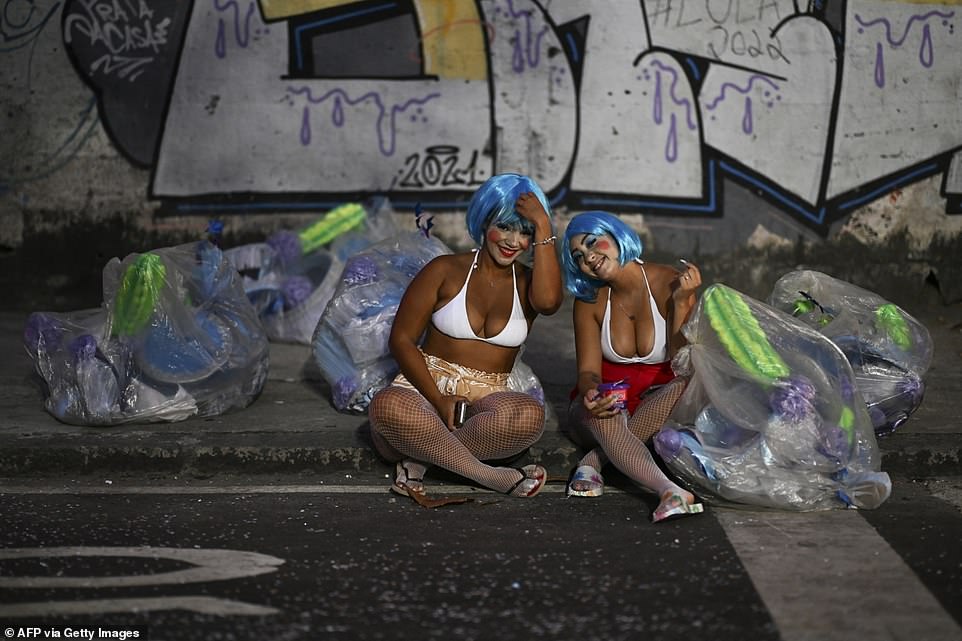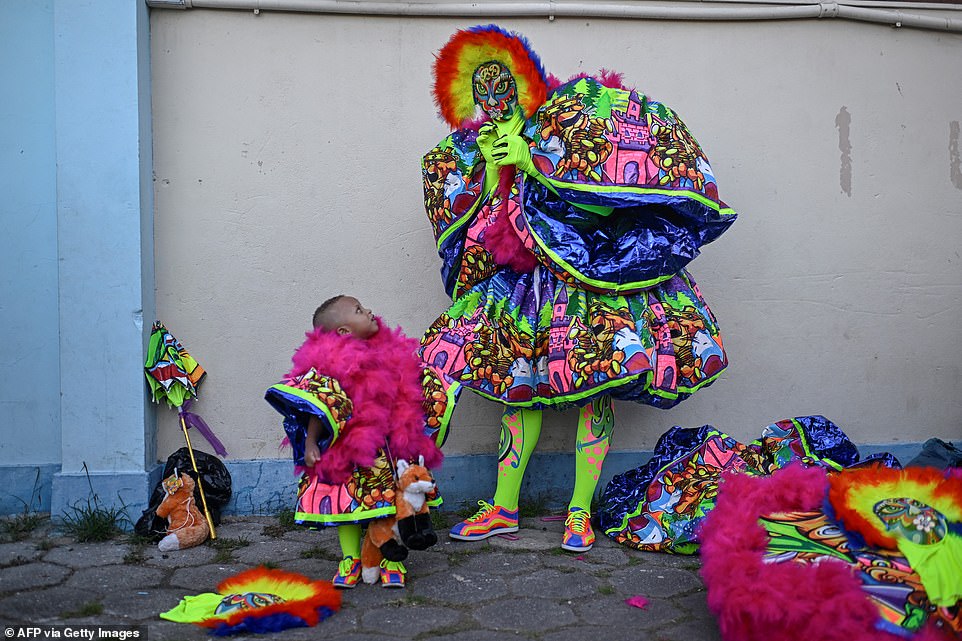Glistening with sequins and sweat and shimmying to sultry samba beats, thousands of performers danced their way down a Rio de Janeiro avenue on Sunday as the Brazilian beach city’s famed carnival parades got into full swing.
With whimsical floats, thundering drum sections and legions of performers in fanciful, flesh-flaunting costumes, 12 samba schools are competing for the coveted title of carnival champions across two nights of epic booty shaking.
A capacity crowd of 70,000 spectators cheered from the packed stands of the Sambadrome stadium, the city’s purpose-built parade venue, with millions more expected to watch live on TV.
Rio has already been celebrating carnival for weeks with colourful, free-for-all street parties known as ‘blocos’.
Sunday and Monday’s parades are the climax: sumptuous festivals of colour and sound that last all night and into the next day. But there is more to carnival than all-night partying.
The samba schools are rooted in Rio’s impoverished favela neighborhoods, and each parade tells a story, often dealing with politics, social issues and history, and each has 60 to 70 minutes to dazzle its way down 700 meters of Marques de Sapucai and impress a jury of judges who scrutinise the tiniest of details.
Potentially devastating fractions of points can be lost for being out of sync, running over time or lacking flair.
